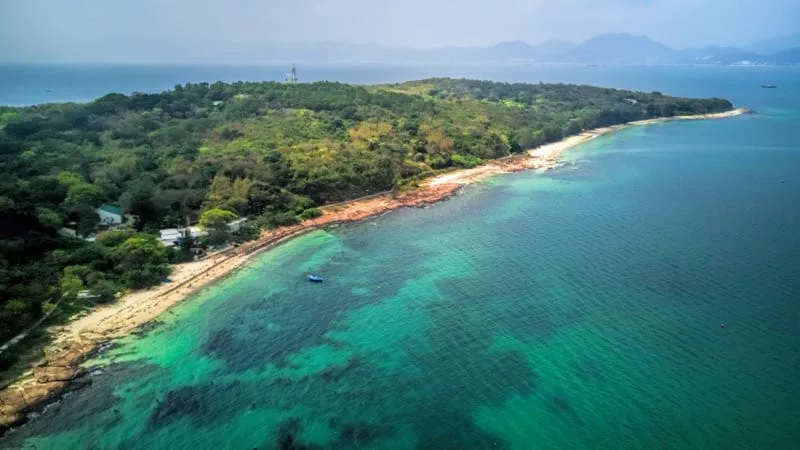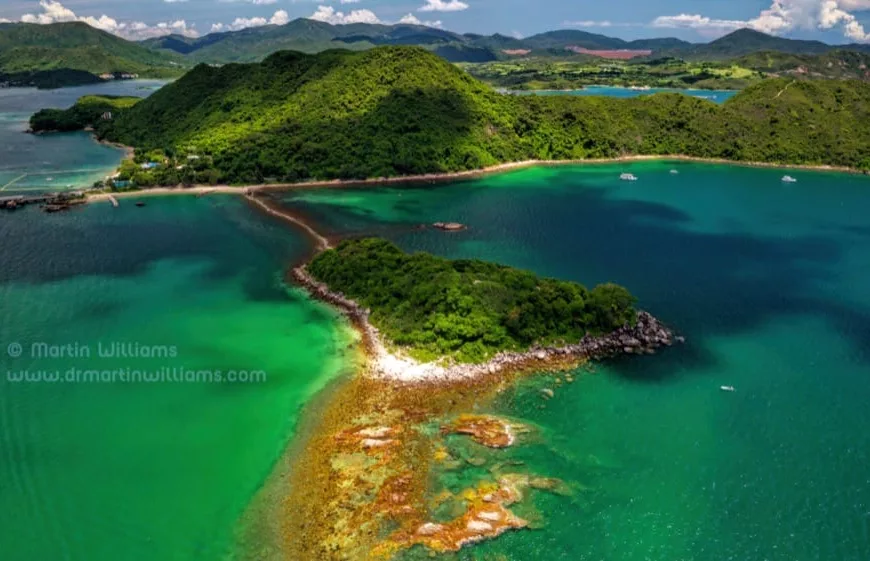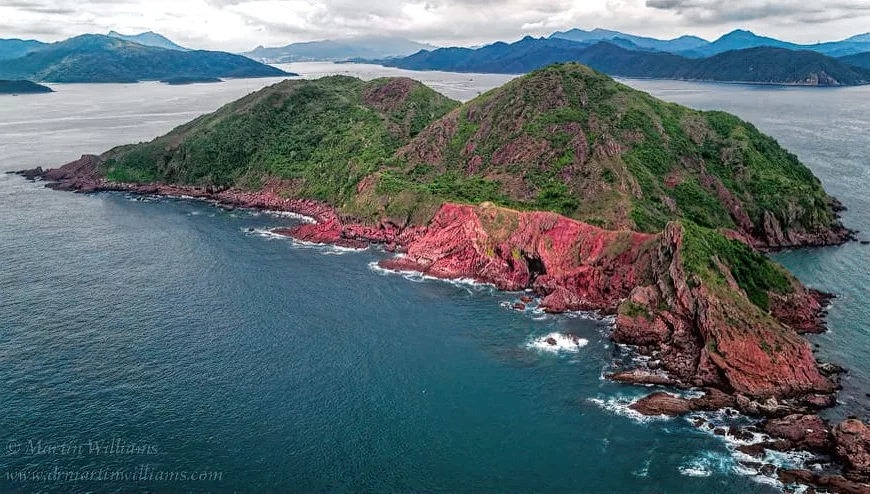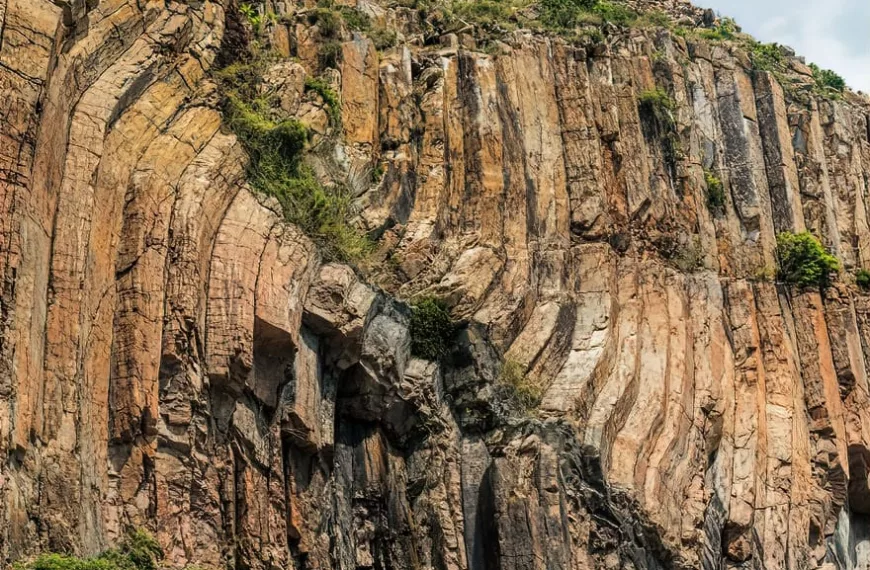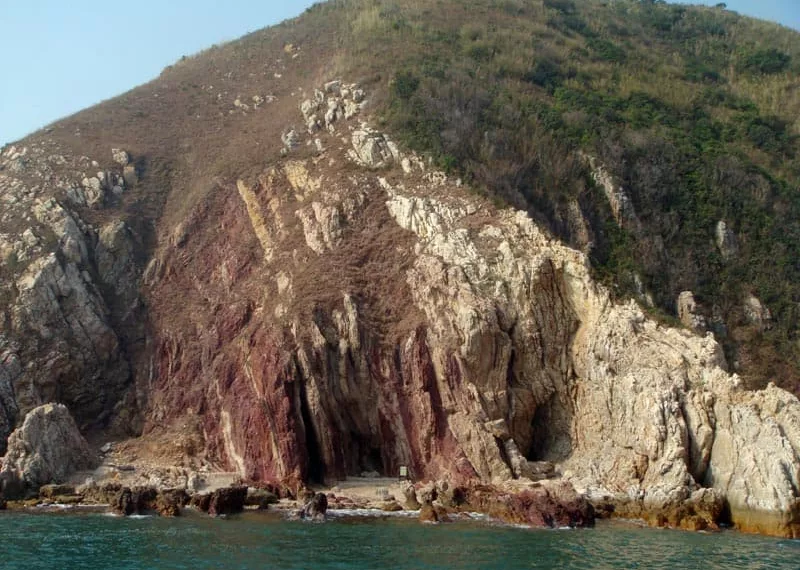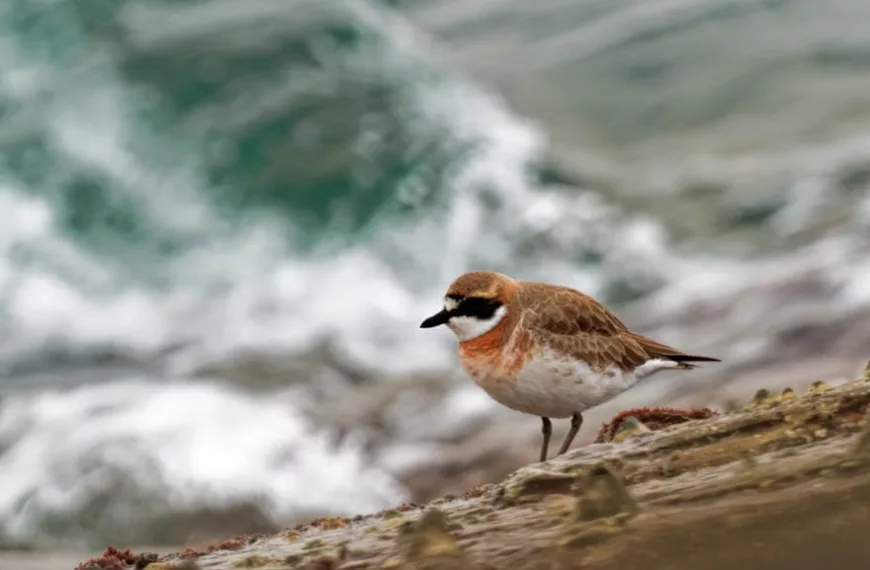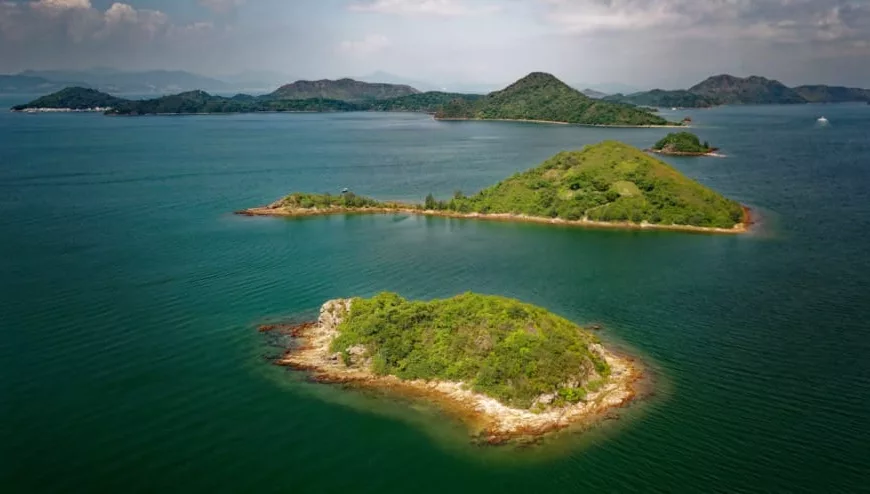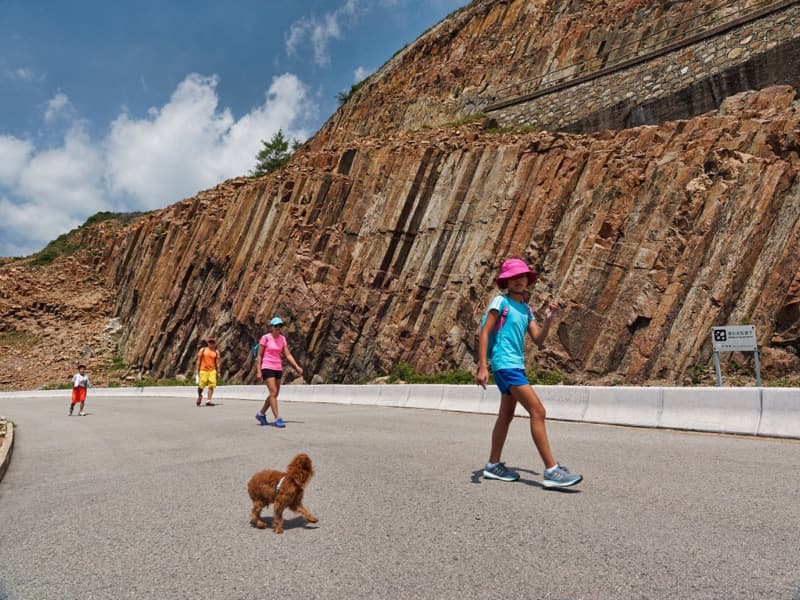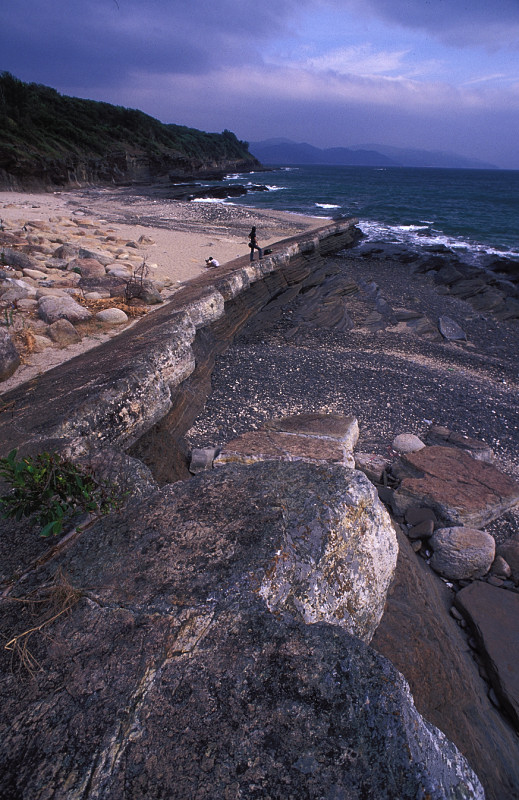The Ung Kong group of islands is a cluster of three islands – Wang Chau, Basalt Island and Bluff Island, lying off the southeast tip of the Sai Kung Peninsula.
They’re made of the same tuff that occurs from the southeastern peninsula to the Ninepin Group, and developed in the Sai Kung Caldera. Here, too, hexagonal jointing is a key feature, resulting in spectacular sea cliffs and arches. Though this looks like the columnar jointed basalt of the Giant’s Causeway in Ireland, there is no basalt here – so Basalt Island seems misnamed. [It’s Chinese name, Fo Shek Tsai, is more appropriate – Child of Fire Rocks?]

Along coastlines exposed to the waves, pounding waves have fashioned – and continue to fashion – imposing cliffs. These include Hong Kong’s highest cliff, a precipitous 140-metre wall of rock on eastern Bluff Island (Sha Tong Hau Shan).
Western Bluff Island, by contrast, has less steep slopes, and on the northwest coast there is a pleasant cove with a beach, and a coral community close inshore.
Sea Arches and a Blowhole
Sea arches are striking features of Wang Chau and Basalt Island. Hong Kong’s highest sea arches are here – a 50-metre high arch through Wang Chau, and the 45-metre Lam Wan Kok arch through southeast Basalt Island.
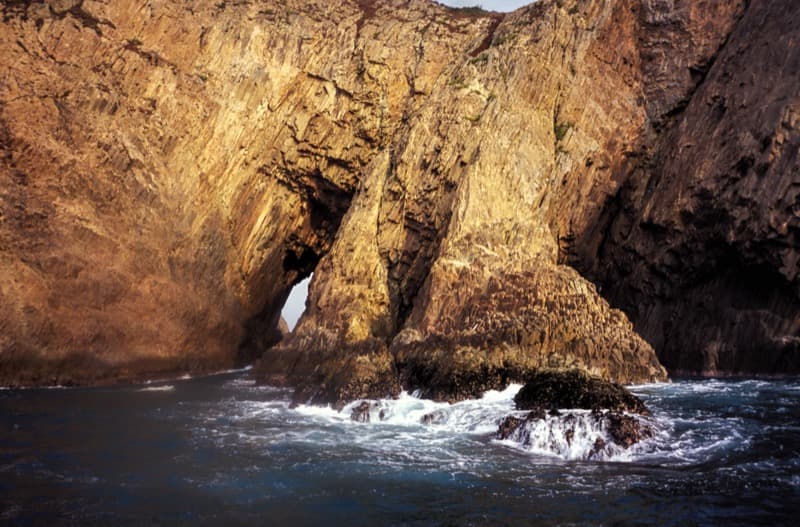
These form by erosion along lines of weakness. First, caves are cut on either side of headlands, and eventually the waves cut right through so that a tunnel or arch forms. Wave refraction may be involved, too – perhaps focusing the energy of waves around a headland.
At north Wang Chau, there is a blowhole. This is the mouth of a small sea cave, and when conditions are right, waves surge through the cave, and then blast spray through the hole.
A Deadly Plane Crash
As they’re rugged and remote, the Ung Kong islands have no settlements. Even neighbouring Town Island (Fu Tau Fan Chau) – which is more sheltered and has a somewhat gentler profile – lacks a hamlet, though there is a drug addiction treatment centre on the west coast.
But there was one historically noteworthy incident here – on 21 December 1948, when a plane crashed into Basalt Island, killing all 33 [or 35] people on board. The passengers included Quentin Roosevelt, grandson of Theodore Roosevelt, who was US president from 1901 to 1909.
The crash occurred during fog, with the plane descending over Mirs Bay to land at Kai Tak Airport. Though sabotage has been suggested as the cause of the crash, it is possible that through a gap in the fog the pilot saw the lights of the Nanyang Studio – forerunner of the Shaw Studio – in To Kwa Wan, and mistook them for the airport lights. This led him to take an approach that was too far to the north, and not low over the sea as expected, but slamming into Basalt Island.
Today, a cairn on northern Basalt Island marks the site of the crash.
An Underwater Jeep
At Ung Kong Wan, Bluff Island, there is a curio for visitors: a jeep is on the seabed below the beach. It may have been dropped or abandoned by smugglers who had been taking it to mainland China.
Marine Life
Though the rough-hewn rock and swarthy vegetation of the islands have an impoverished flora and fauna compared to much of Hong Kong, the surrounding waters are home to diverse marine life.
At Ung Kong Wan, north Bluff Island, there is one of Hong Kong’s best hard coral communities. This bay is popular with visitors arriving by pleasure boat, and the coral here formerly showed significant damage by boat anchors. However, this became the first place in Hong Kong where buoys were placed to mark a no anchoring area, and this measure has proven successful, with recent Reef Check surveys showing an increase in coral coverage.
Ung Kong Wan is the most sheltered place in the Ung Kong Group, and away from here hard corals are scarcer. There are, however, soft corals, as well as a wide variety of fish and other animals.

